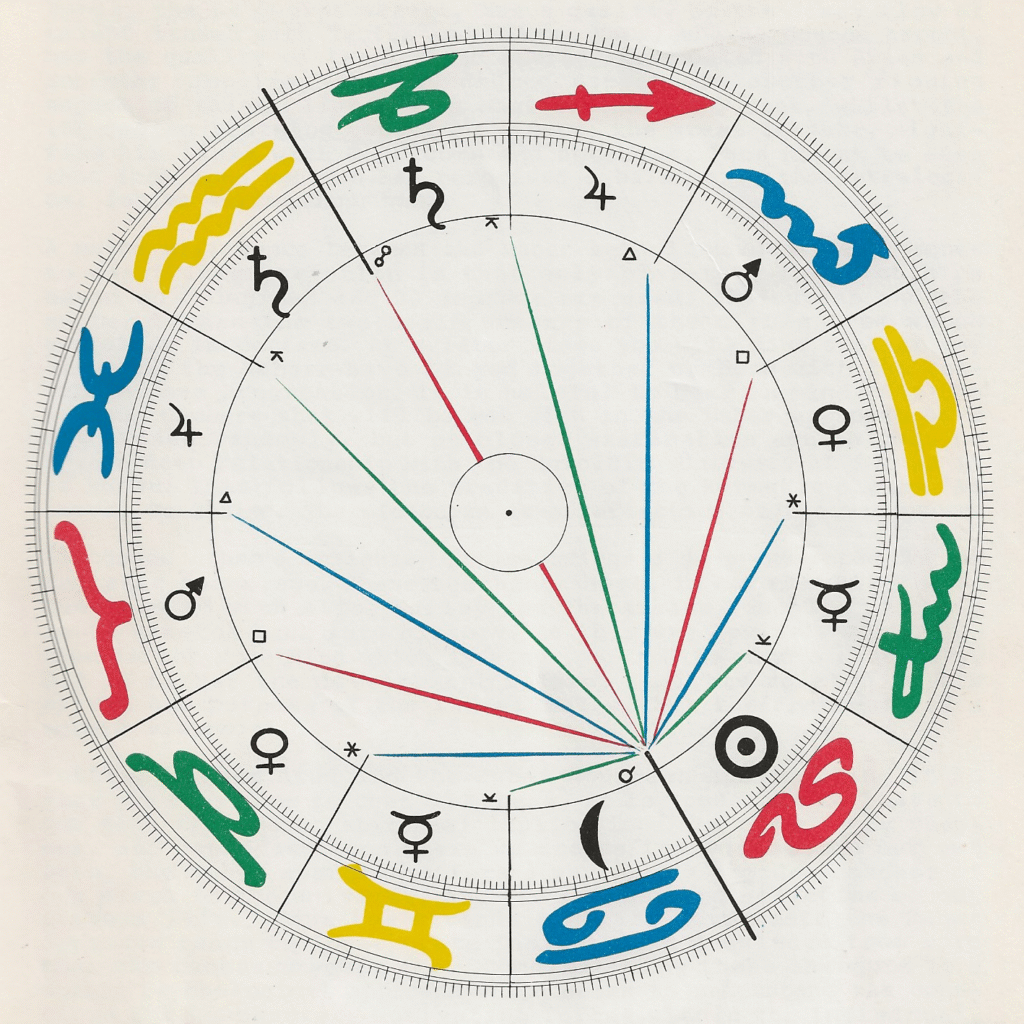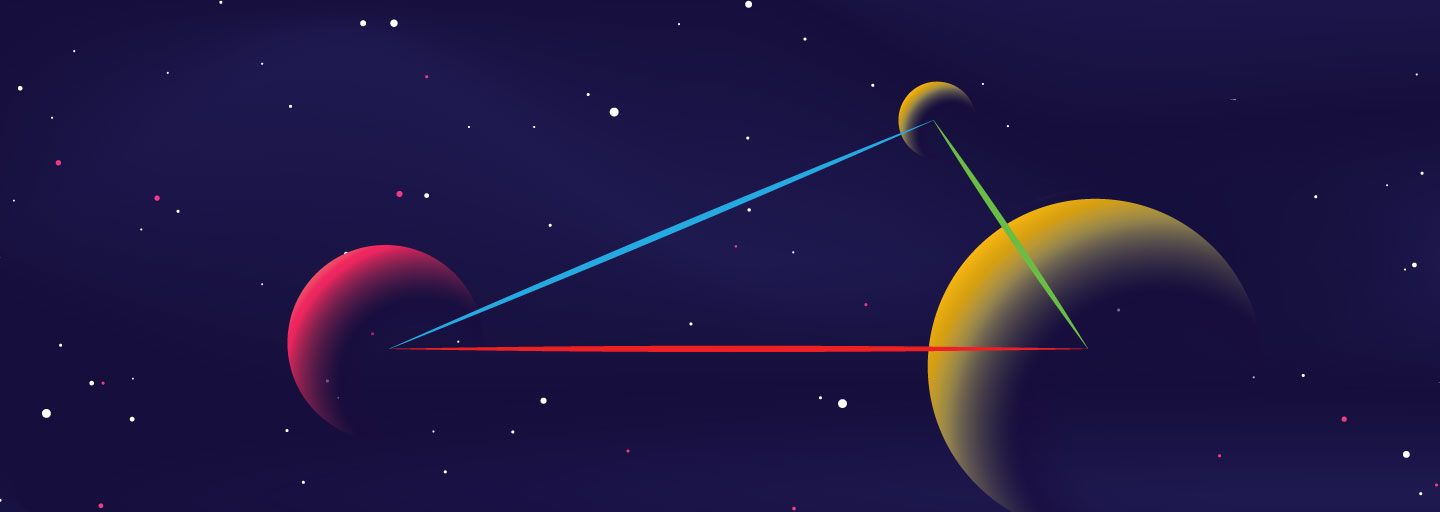The five Ptolemaic aspects are the conjunction, sextile, square, trine & opposition. Some say that the reason for only including those aspects was because they were the only ones that could inscribe a shape which is enclosed and complete within the zodiac wheel. Each of them was able to inscribe a polygon, that enclosed shape, within the wheel. This does not totally eliminate the use of the semi-sextile which fulfills the requirement as a twelve-sided figure but most ancient and traditional astrologers dismissed the semi-sextile as too weak to be of noticeable influence. The quincunx, also called the inconjunct, which literally means “unconnected”, was also not usually considered, I believe primarily because they thought of it as simply not seen.
Interestingly, the Ptolemaic aspects were based on the element and modality relationships between the signs. This can also be defined as temperament and motivation. This Planets in trine aspect share the same element which indicated an easy-lowing energy relationship, considered beneficial. Planets in sextile aspect shared “compatible” elements, either Fire & Air or Earth & Water, that is either masculine (Yang) or feminine (Yin). They had similar polarity and, therefore, common ground, but you did have to apply effort to get them to work together. Planets in square or opposition aspect to each other have the same modality, the same Quadruplicities, (Cardinal, Fixed or Mutable). They share the same form of motivating energy making them dynamic. The specific energy was based on the specific modality. Squares created more conflict-based stress because they had incompatible elements. Oppositions were more tension-based stress having only to resolve differences that shared forms of compatibility. Since semi-sextile and quincunx aspects do not share either modality or any compatibility of elements, it seems that, for the most part, they were simply not considered traditionally.
The Ptolemaic aspects are represented by the colors red and blue in my system. The flowing aspects are colored blue and the energized aspects are colored red. I also use the semi-sextile and quincunx aspects as part of my aspecting process. They are colored green in my system. I consider these green aspects to be more about learning, communication, thinking and the need to use the intellect to find common ground with energies or themes that offer no commonality of motivation or temperament.
The Renaissance corresponds with the beginning of the age of individualism. For astrology this meant that the consulting of horoscopes began to be focused on horoscopes for individuals and about individuals. Horoscopes had been cast and used for individuals for a long time but the focus was on traits and life events and potential changes and opportunities. As the world evolved and Enlightenment advanced, astrology faced increased skepticism but it found new life in the 19th and 20th centuries when it resonated to a surge in focus on spirituality and the occult. This led to the interpreting of astrology through the lens of contemporary psychology. Astrology become useful as a tool for self-exploration and personal growth. This focus gave meaning to the semi-sextile and quincunx as they both relate to the thinking, communication, and learning functions. Semi-sextiles relate to gathering information. Quincunxes use information to resolve life issues. This can help lead to more conscious living.
I am following the Huber Method and System in my use of colors. The Huber System aligns well with other systems on the meanings of the various aspects. In fact, there is not much variance within different systems for the meanings of the aspects. The Hubers, however, provided a figure, a map of sorts, (see below) which illustrated how they represented, at a very basic and deep level, the relationship between the energies of the signs of the zodiac, the planets ruling those signs, and how the aspects can be organized and described based on the energies or urges of the planets.

You will see that the planetary rulers are the “traditional’ rulers, not the “modern” ones. Reference to that Huber Aspect Figure shows the 30-degree aspect to be related to Mercury through Gemini and Virgo. This is the learning aspect. The 60-degree aspect is tied to Venus, through Taurus and Libra. This is all about the use of talent and resources. The 90-degree aspect is tied to Mars through Aries and Scorpio. Here we are working with the concept of tension and energy. The 120-degree aspect is tied to Jupiter through Sagittarius and Pisces is another flowing concept involving talent and enjoyment. The 150-degree aspect relates to Saturn through Capricorn and Aquarius with Saturn symbolic of the learning process that comes with having the discipline to create structure out of not fitting parts. I have always found this figure and set of concepts to be symbolic of the cosmic order that can be found in astrology.

